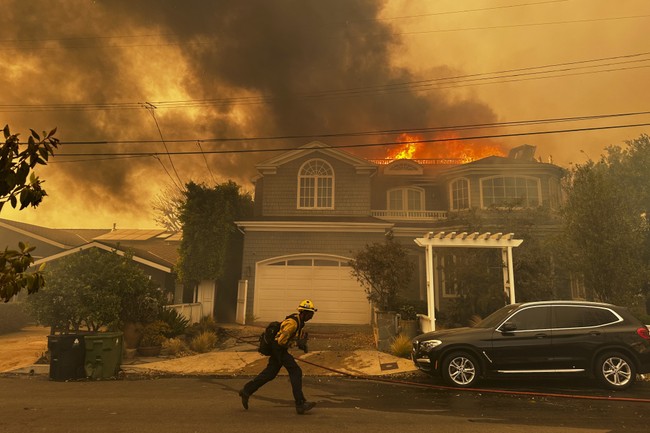
Back in January, when firefighters were doing their best to fight the blaze in the Pacific Palisades, the fire hydrants started running out of water. Developer Rick Caruso commented about this on local television and his comments went viral. That led to this amazing video in which a local news anchor tried to debunk Caruso’s claims only to have a reporter on scene correct him seconds later. Watch the whole clip.
In an attempt to debunk Rick Caruso, LA morning anchor Melvin Robert is embarrassingly fact-checked by their own on-the-ground reporter: pic.twitter.com/lCvfMEnXxJ
— MarioFakerREAL 🥸 (@mario_faker) January 8, 2025
Later that day city officials admitted the Palisades had run out of water. Within two days the anger over this peaked when a reporter cornered LA’s fire chief by asking if the city had failed her and her department.
JUST IN: Los Angeles Fire Department chief Kristin Crowley turns on Los Angeles leadership, says they failed her.
Remarkable interview.
Crowley called out the city for having no water in the Santa Ynez Reservoir.
Reporter: “Did the city of Los Angeles fail you and your… pic.twitter.com/fUQPoW32QA
— Collin Rugg (@CollinRugg) January 10, 2025
Chief Crowley would eventually be fired for those comments. Mayor Bass, who wasn’t even in the country when the fires started, claimed Crowley was fired because she didn’t offer the mayor a proper warning, but later reports indicated that her top advisors did know about the expected high winds before she left for Africa.
Yesterday, the NY Times published a follow up story about the Santa Ynez reservoir after the city finally released a bunch of new documents in response to an FOIA request. It turns out the city was concerned about the reservoir being closed to repair a torn cover, so much so that they took steps to bring online an older reservoir that had been retired in 2013.
Seven months before fire swept through the Pacific Palisades neighborhood of Los Angeles, the city’s water managers were formulating a plan to revive an old reservoir to temporarily boost the area’s limited water capacity.
The Los Angeles Department of Water and Power was exploring the option because the neighborhood’s main reservoir — the Santa Ynez Reservoir — had been taken offline as a result of a torn cover, which officials had begun preparations to repair early in 2024. The repair project was still months away from completion this January when the fire broke out, and with the reservoir empty, firefighters ran short of water in fighting the blaze…
In early June 2024, crews spent several days cleaning the Pacific Palisades Reservoir, a facility that was about three miles away from the larger Santa Ynez site, and that was retired in 2013. The work, officials wrote, was “in preparation for temporarily placing the Pacific Palisades Reservoir back into service while the Santa Ynez Reservoir is out of service.”
But it never happened. A spokesperson for the Department of Water and Power told the Times that someone decided bringing the old reservoir back online presented a danger to workers and/or local residents because of structural issues.
Ms. Cheng said the reservoir, built in 1929, had been retired because its low elevation meant water sat there longer than was ideal, creating quality issues. She said cracks were also causing leaks and the reservoir’s roof was compromised.
And that’s all we get. Was this call made by a city engineer or some union boss? Someone decided the backup plan was too dangerous so there was no backup plan. When the fires started in early January, both reservoirs were offline.
Hundreds of residents who lost their homes are now suing the city. No one believes that all of their homes could have been saved, not even if the Santa Ynez reservoir had been completely full. But it’s likely some homes could have been saved if firefighters hadn’t run out of water.
The story ends by noting that the Santa Ynez repairs were completed last month and the city started filling it again with plans for it to be back online this week. Then they discovered more cracks and it had to be drained again. The new plan is to have it operational again by June, about six months too late to help Palisades residents who lost their homes.








